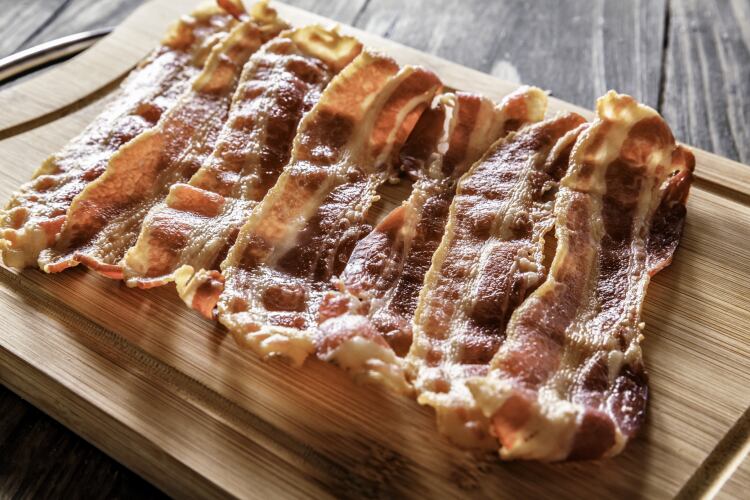Nitrite is a common preservative in meat products. Known as E250 in the European Union, the additive is frequently used to give cured meats like bacon a pink colour. In meat, nitrites turn into nitric oxide, which reacts with proteins in the meat, changing its colour and helping preserve it.
But while nitrites serve an important functional purpose, in 2015 a World Health Organization report classified processed meat as carcinogenic because curing - by adding nitrates or nitrites or by smoking - can lead to the formation of potentially cancer-causing chemicals.
"E250 could form carcinogenic nitrosamines in your body and the use of nitrites is already heavily regulated to prevent over-consumption," noted Coen van Oorschot, director at Netherlands-based Vaess.
A nitrite-free stable pink
Leveraging its 75-years of experience, the food engineering company has developed a new approach to removing nitrite from the production process for bacon. “The nitrite-free solutions currently available work with extracts - something we wanted to do differently,” van Oorschot explained.
The group worked alongside an unnamed biotech company to collaborate on a solution that uses cultures to preserve the pink appearance of cured meat.
“We worked with a larger biotech company that is active in cultures. That is a very specific activity. We as Vaess know what we do and what we do not know…The fundamental knowledge on cultures, is something where other companies are specialists. We believe that collaboration is speeding up innovation,” van Oorschot told FoodNavigator. “We had a theoretical idea, which they were able to make into a reality. With our knowhow of meat products and the mechanism of action of nitrite, and their expertise on bacterial cultures the theoretical idea was proven.”
So what is this new approach to removing the need to add nitrite to bacon?
“We came up with a solution in which nitrite has been replaced by a super-smart brine compound with high-quality protein sources and special preserving bacterial cultures,” Vaess’ director revealed. “The cultures produce, under specific conditions, a nitrogen gas which binds to the myoglobin, forming a stable pink pigment.”
Use of the culture doesn’t just stop at maintaining a pink experience, it delivers other organoleptic benefits too, we were told. “The brine affects the entire product, flavour, mouthfeel, texture, appearance and yield. Thanks to the rich profile of the brine, the taste of the nitrite free bacon is often described as delivering more umami, or even kokumi; depth of taste.”
The process can often be integrated into existing production lines, Van Oorschot continued. “That depends on the existing equipment, but in most cases no additional equipment is required. Plug and play would be great, but some tweaking here and there is inevitable. It fits in regular smoked bacon processes.”
Moving away from nitrites
How the ingredient is labelled will depend on the customer’s interpretation of the ingredients declaration legislation, but Vaess recommends ‘bacterial starter culture’ or ‘microbiological starter culture’. Van Oorschot said this is much more consumer-friendly than nitrite, which is an additive that has fallen out of favour with shoppers. “In general we see a continuous move to less unhealthy, less guilty-feel food. Nitrite-free is definitely one of them,” we were told.
This demand, Van Oorschot said, provides brands with the opportunity to build a higher-value proposition. “We are moving to an era where we do not mind eating a bit less, and spending a bit more on good food. The decades with ‘more for less’ as adagium are gone. We want to eat better, consume less as long as it is good, take care what we put in our bodies.”
This could be an important consideration for manufacturers, Van Oorschot conceded, because swapping out nitrite for the new culture does come at a cost. “Nitrite is cheap, and effective. Our brine cost is comparable to speciality brines. So yes, the brine is more expensive. However, the effect on the cost price of bacon is much smaller and fits with a premium product. In general, I think we have to understand – and so do consumers- that good food comes at a certain price.”

